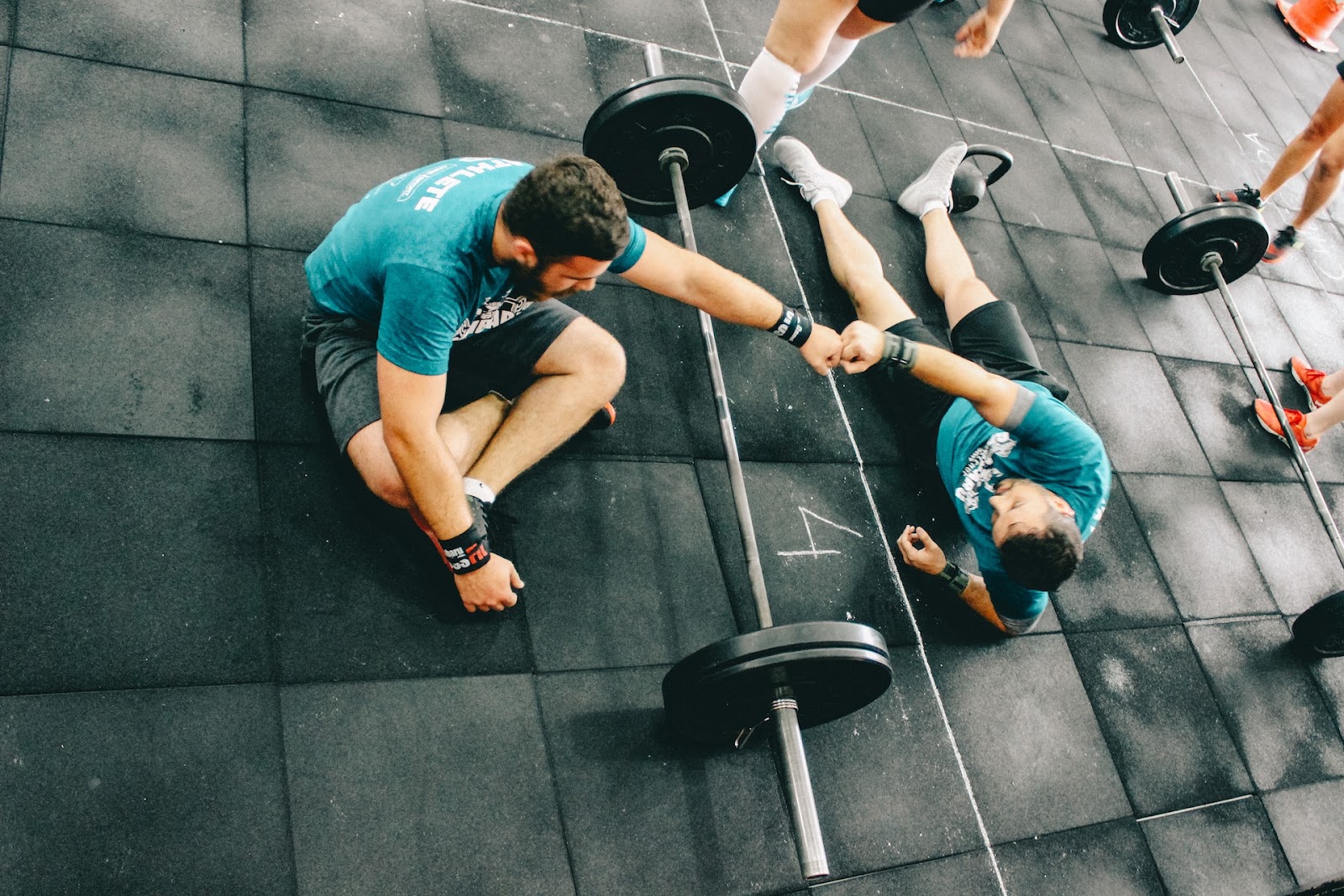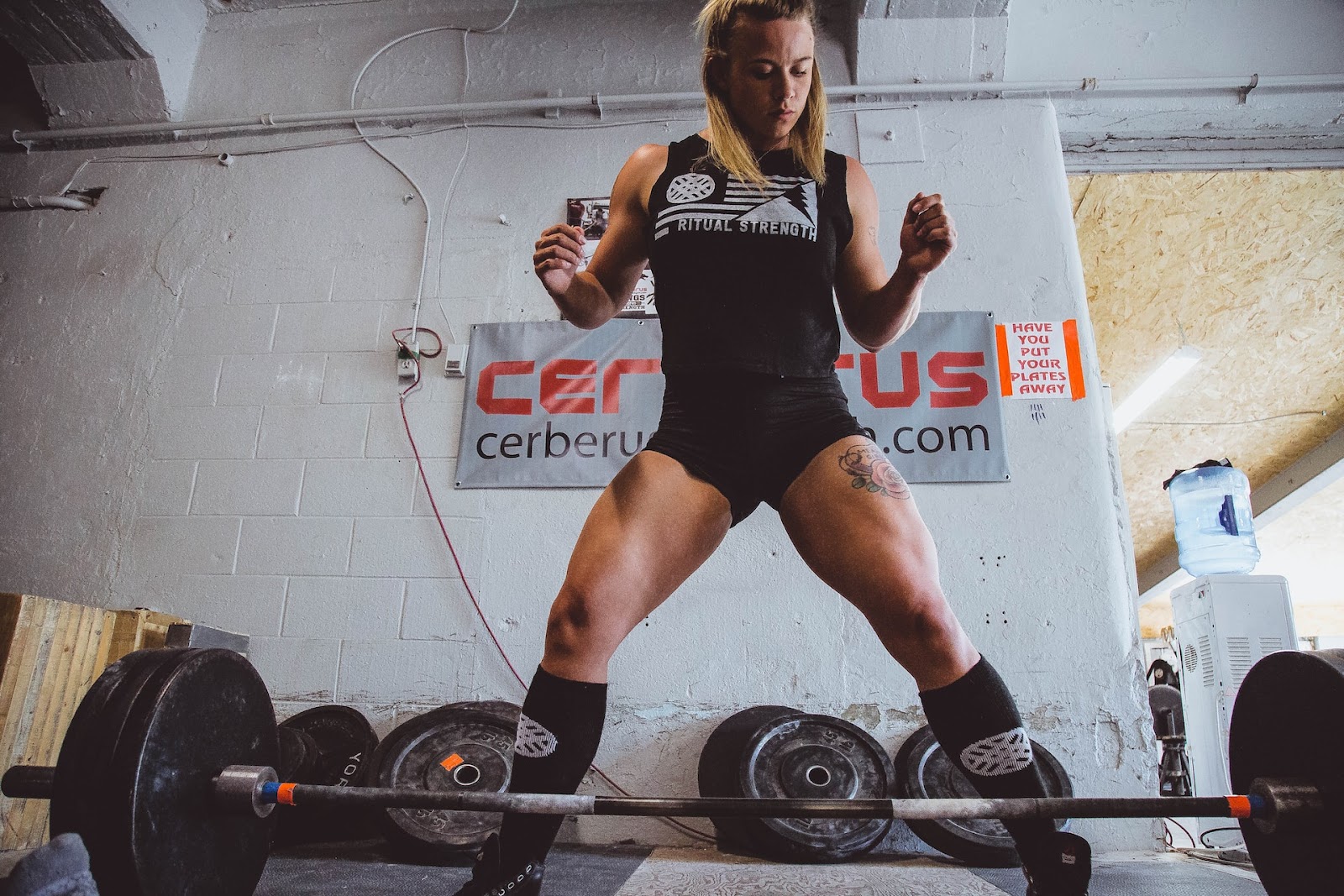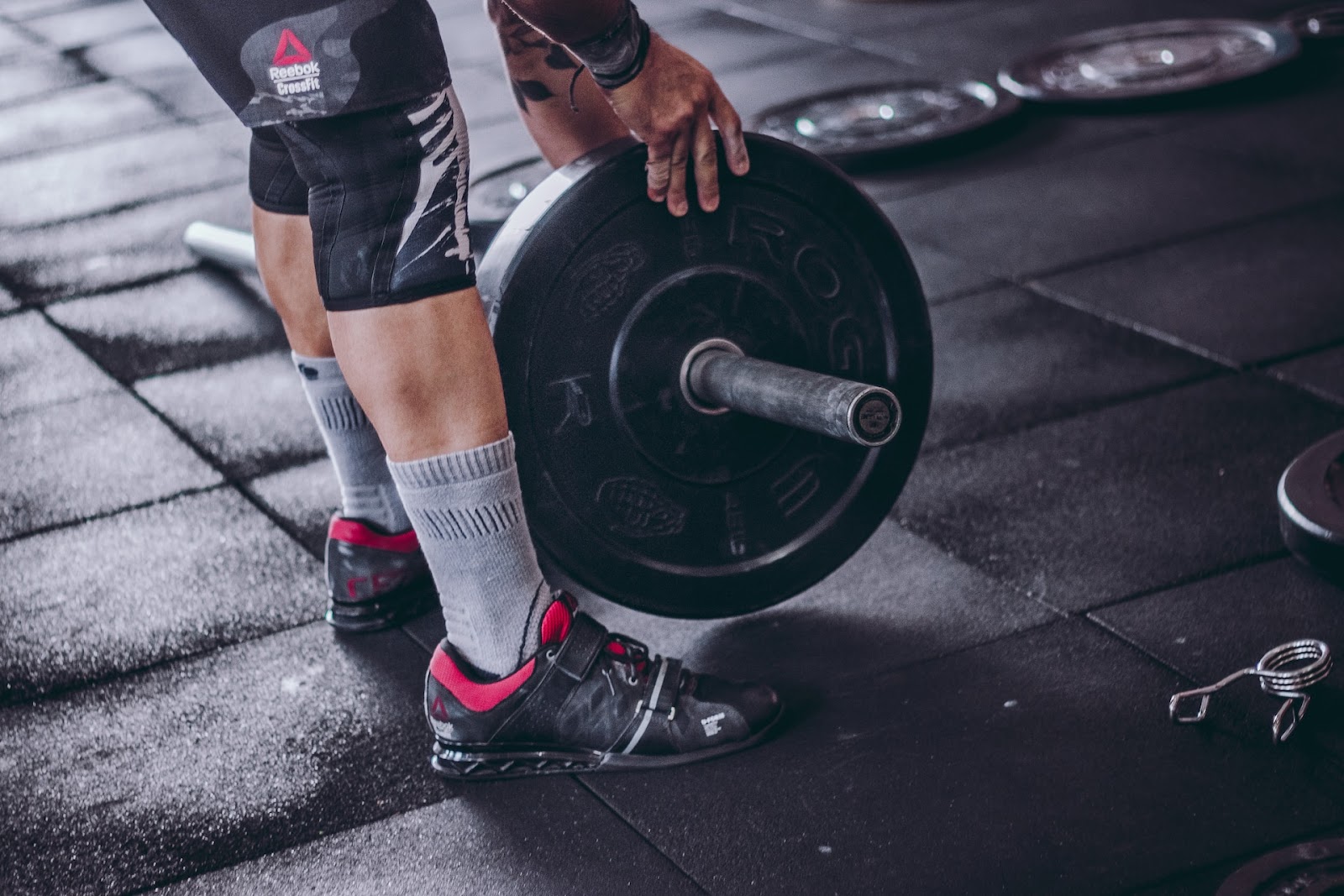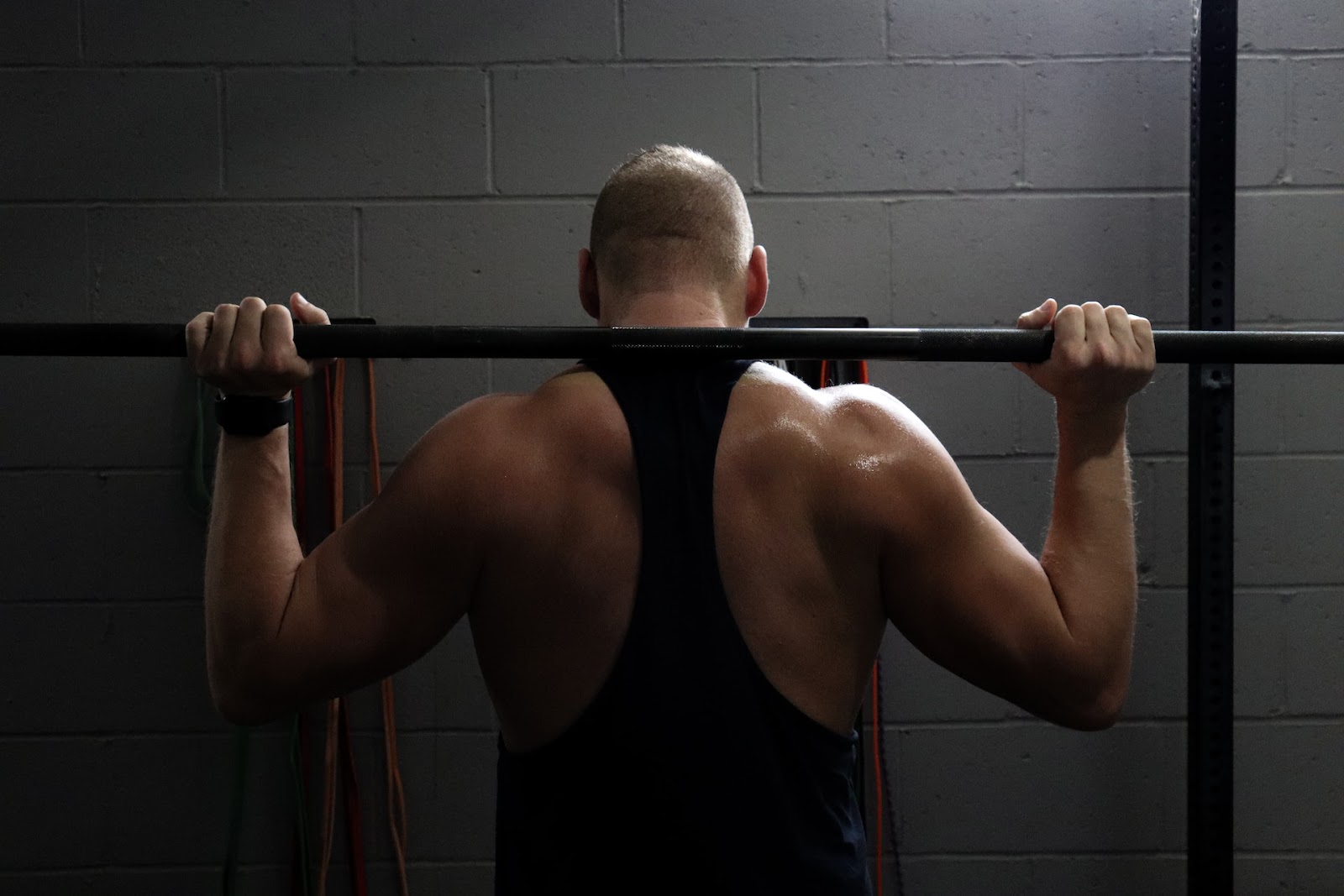Pendlay Row and Barbell Row are two popular exercises that target the back muscles using a barbell. However, there are some key differences between the two, and for some lifters, Pendlay Row variations might be a better fit.
The Pendlay Row is a stricter version of the Barbell Row, where the barbell is lifted from the floor and then lowered back to the ground between reps. This limits the range of motion but ensures a more explosive and powerful movement.
Here are some Pendlay Row variations to try:
|
Wide-grip Pendlay Row: |
Use a wider grip on the bar to target the upper back muscles. |
|
Single-arm Pendlay Row: |
Alternate between each arm to work on unilateral strength and stability. |
|
Inverted Pendlay Row: |
Use a Smith machine or a barbell resting on a power rack to perform this variation, which places the lifter at an inverted angle. |
Ultimately, whether you choose Pendlay Row or Barbell Row depends on your lifting goals and preferences.
Pendlay Row vs Barbell Row
The Pendlay Row and the Barbell Row are two exercises that can be used to target the muscles of the back. Though similar in form, both exercises have distinct differences. To understand the difference between the two rows, let’s examine the form and functionality of each.
Pendlay Row Technique and Setup
The Pendlay row is an Olympic-style weightlifting exercise that targets the back muscles, including the lats, traps, and rhomboids. Compared to the barbell row, the Pendlay row involves lifting the weight from the ground and returning it to the ground between each rep. This results in a more explosive movement and a greater activation of the back muscles.
Here’s how to set up and execute the Pendlay row:
|
1. |
Place a barbell on the ground and load with weight plates. |
|
2. |
Stand with your feet hip-width apart and your shins close to the barbell. |
|
3. |
Hinge at the hips and grasp the barbell with a pronated grip (palms facing down), slightly wider than shoulder-width apart. |
|
4. |
Take a deep breath, brace your core, and pull the barbell explosively towards your chest, leading with your elbows. |
|
5. |
Lower the barbell back to the ground and repeat for the desired number of repetitions. |
Variations of the Pendlay row include underhand grip, mixed grip, and one-arm Pendlay rows.
Barbell Row Technique and Setup
Barbell rows are one of the most effective exercises to strengthen your back muscles. Here’s how to properly set up and execute the barbell row technique.
|
Step 1: |
Approach the barbell with your feet shoulder-width apart. |
|
Step 2: |
Bend your knees and hinge at the hips to grip the bar with a pronated grip, palms facing down. |
|
Step 3: |
Engage your core muscles, lift the bar while keeping it close to your body, and stand up in a controlled motion. |
|
Step 4: |
Keeping your chest up and shoulders back, hinge at the hips until the barbell is just below your knees. |
|
Step 5: |
Contract your back muscles and pull the bar towards your belly button, keeping your elbows close to your body. |
|
Step 6: |
Lower the barbell back down and repeat for desired reps. |
Pendlay rows, on the other hand, are a variation of barbell rows where the bar is lifted from the floor on every rep, resulting in a more explosive movement. While both exercises target the back muscles, Pendlay rows require more effort from the lower body muscles and may be more suitable for athletes and powerlifters.

Muscles Worked: Pendlay Row vs Barbell Row
The Pendlay Row and the Barbell Row are both compound exercises that target several primary and secondary muscle groups, but there are some key differences between the two workouts that make each one unique.
The Pendlay Row involves lifting the weight from the floor for every rep, while the Barbell Row involves starting with the weight off the floor and pulling it towards the body. The Pendlay Row primarily targets the lats, traps, and rhomboids, while the Barbell Row focuses on these muscles as well as the biceps, forearms, and lower back.
Some Pendlay Row variations that can be added to your workout include the single-arm Pendlay Row, the wide grip Pendlay Row, and the underhand grip Pendlay Row. Integrating these variations can help you target different muscles and achieve more well-rounded results.
How to Perform Pendlay Row Variations
The Pendlay Row is a type of back exercise that allows you to lift heavier weights with less lower back strain. It is often referred to as a barbell row variation, and by performing pendlay row variations you can further increase the effectiveness of your exercises.
Here, we will discuss the basics of how to perform pendlay row variations for maximum gains.
Pendlay Row with Barbell
Pendlay row is a type of barbell row notable for being named after legendary weightlifting coach Glenn Pendlay. While it is similar to other types of barbell rows, the Pendlay row is performed differently, and it offers some unique benefits.
|
Step |
Instructions |
|
1 |
Load the appropriate weight onto the barbell. |
|
2 |
Stand with your feet shoulder-width apart and toes underneath the bar. |
|
3 |
Bend your hips and knees to reach the bar, keeping your back straight. |
|
4 |
Grip the bar with an overhand grip that is slightly wider than shoulder-width. |
|
5 |
Pull the bar off the ground and retract your shoulder blades, keeping your elbows close to your body. |
|
6 |
Lower the bar back down to the ground and repeat. |
Pendlay rows are an effective exercise for developing back strength and muscle mass. They differ from other barbell rows in that they involve pulling the bar from the ground for each repetition, which forces you to engage more lower-body and core muscles.
Single Arm Dumbbell Pendlay Row
The Single Arm Dumbbell Pendlay Row is a variation of the classic Pendlay Row exercise that incorporates a dumbbell instead of a barbell. This exercise targets the back muscles, specifically the lats, traps, and rhomboids, and helps to increase overall strength and power.
Here’s how to perform the Single Arm Dumbbell Pendlay Row:
|
1. Stand with your feet shoulder-width apart, holding a dumbbell in your right hand with your palm facing your body. |
|
2. Hinge forward at the hips until your back is parallel to the ground, keeping your core engaged and your spine neutral. |
|
3. Keeping your elbow close to your body, pull the dumbbell up towards your chest and squeeze your shoulder blades together. |
|
4. Lower the dumbbell back down to the starting position. |
|
5. Repeat the exercise for the desired number of reps before switching to your left arm. |
Pro tip: When performing the Single Arm Dumbbell Pendlay Row, focus on keeping your back straight and your core tight to avoid any strain on your lower back.
Pendlay Row with Chains
Pendlay Row with Chains is a variation of the Pendlay Row exercise that adds a challenging dynamic to your workout routine.
Here’s how to perform the Pendlay Row with Chains:
|
Set up the chains by placing them over the barbell and securing them with collars. |
|
Load the bar to a weight that challenges you but is still manageable. |
|
Stand with your midfoot under the bar and grip the bar with a shoulder-width grip. |
|
Push your hips back, bend your knees, and hinge your torso forward until your shins touch the bar. |
|
Set your back in a neutral position, engage your lats, and pull the bar towards your chest, making sure to lift the chains off the ground as well. |
|
Lower the bar back down to the floor and repeat for the desired number of reps. |
Pendlay Row with Chains offers a unique variation to the popular Pendlay Row and Barbell Row workouts, increasing the intensity and difficulty levels of the exercise.
Pro Tip: Make sure to maintain proper form throughout the exercise to avoid injury and maximize results.
Common Pendlay Row Mistakes and How to Fix Them
Pendlay Rows are a great exercise for building strength and gaining muscle, but they come with a high injury risk if you don’t do them correctly. Common mistakes with Pendlay Rows include not setting up your body correctly before lifting, lifting too heavy of a weight, and not bringing the bar all the way down to the ground.
In this article, we’ll discuss common Pendlay Row mistakes and how to fix them.

Rounding or Arching the Lower Back
Rounding or arching the lower back during Pendlay Rows is a common mistake that can lead to injury and prevent you from getting the most out of your workout. Here’s how to fix it:
|
Keep your back straight and your core engaged throughout the exercise. |
|
If you find yourself rounding your back, take a break and reset your posture before continuing. |
|
Start with lighter weights and focus on maintaining proper form, gradually increasing the weight as you become more comfortable with the movement. |
|
Consider incorporating variations of the Pendlay Row, such as the Barbell Row or Single Arm Row, to work different muscle groups and challenge your body in new ways. Remember that proper form is key to getting the most benefit out of any exercise. |
Not Fully Extending the Elbows
When performing a Pendlay row, it’s important to avoid the mistake of not fully extending your elbows. Here’s why: by not fully extending your elbows, you’re cheating yourself out of the full range of motion for the exercise. This means you won’t be effectively targeting the muscles in your upper and middle back, which is the primary purpose of the Pendlay row.
To fix this mistake, focus on using proper form and control throughout the entire exercise. Begin by standing with your feet shoulder-width apart and gripping the barbell with an overhand grip. With your knees slightly bent, hinge forward at your hips until your upper body is at a 45-degree angle. From this position, pull the barbell towards your chest, fully extending your elbows at the top of the movement before slowly lowering the bar back down to the starting position.
By using proper form and fully extending your elbows in the Pendlay row, you’ll effectively target the muscles in your upper and middle back for optimal results.
Hunching or Shrugging the Shoulders
Hunching or shrugging the shoulders is a common mistake that people make while performing the Pendlay row exercise. To fix this issue, one needs to focus on their posture and form while performing the exercise.
Here are some tips to correct hunching or shrugging of shoulders during Pendlay row exercise:
- Firstly, use a lighter weight than usual, so you can concentrate on your form.
- Make sure you maintain a straight spine throughout the exercise by keeping your chest up and your shoulders down and back.
- Focus on using your lats to pull the barbell up toward your chest without involving your traps and shoulders.
- To ensure proper form, you can perform Pendlay row variations, such as the single-arm dumbbell row, inverted row, or the seated cable row. These variations can help you target different muscles and improve your form.
By following these tips and incorporating Pendlay row variations in your workout routine, you can avoid hunching or shrugging of shoulders and improve your overall back strength and posture.
Building Strength and Mass with Pendlay Rows
Pendlay row exercises are great for improving strength and muscle mass. They’re a compound exercise that requires you to use multiple muscle groups and joints. Pendlay rows can be done with either a barbell or a dumbbell, and both variations will provide great results in terms of improved strength and muscle growth.
Let’s take a closer look at how to perform each variation and what the benefits are.

Pendlay Rows for Strength Training
Pendlay Rows have become increasingly popular as a strength training exercise due to their effectiveness in building strength and mass. While they are similar to traditional barbell rows, there are some key differences to maximize their benefits.
Pendlay Rows are performed with a flat back and a vertical torso, allowing for a greater focus on the upper back muscles. The barbell is lifted from the ground each rep, making it a more explosive exercise. This technique also ensures proper form and engages the muscles more effectively.
While traditional barbell rows work the entire back, Pendlay Rows place more emphasis on the lats, traps, and rhomboids. They are also generally performed with heavier weights, making them ideal for maximum strength and mass gains.
There are multiple Pendlay Row variations, including the use of dumbbells or kettlebells and alternate grip placements. Adding variation to your routine can prevent plateaus and keep your muscles challenged.
Pro Tip: When performing Pendlay Rows, keep your torso parallel to the ground and maintain a neutral spine to avoid any risk of injury.
Hypertrophy Training with Pendlay Rows
Pendlay rows are an essential exercise for building strength and mass, especially in the upper back and arms. They are an excellent choice for hypertrophy training, and can provide fantastic results when incorporated into a well-rounded workout routine.
Pendlay rows are similar to barbell rows, but they differ in terms of technique and the muscles they target. With Pendlay rows, the weight is lifted off the ground each time you perform the exercise, which allows you to focus on a more explosive and powerful movement. This results in increased muscle activation and hypertrophy.
Pendlay row variations, such as wide grip and underhand grip rows, can also be beneficial for targeting different muscle groups and promoting overall strength gains.
When comparing Pendlay rows versus barbell rows, it’s important to consider your individual fitness goals and preferences. While both exercises offer benefits, Pendlay rows may be a better choice for those looking to specifically target the upper back and increase power and explosiveness in their movements. However, barbell rows may be better for targeting a wider range of muscle groups.
Pro tip: Incorporate Pendlay rows into your hypertrophy training routine by starting with a weight you are comfortable with and gradually increasing the load over time. Aim for three to four sets of eight to 12 reps each, and remember to focus on the form to get the most out of each repetition.
Pendlay Rows as a Supplement to Deadlifts
Pendlay Rows are an excellent supplement to Deadlifts as they target the muscles in the back and arms, which are vital for building overall strength and mass.
Pendlay Rows are a variation of the Barbell Row and are named after weightlifting coach Glenn Pendlay. Unlike the traditional Barbell Row, Pendlay Rows have the lifter lifting the weight from the ground between each repetition, which means that the barbell is “reset” each time rather than being held in the air, allowing for a better activation of the back muscles. This variation also helps in improving pulling strength, encourages the use of proper form, and results in better posture.
It’s important to note that Pendlay Rows require good technique, particularly in the hips and back, to avoid injury. If you’re new to weightlifting, it’s best to learn the correct form under the guidance of a professional trainer.

Pendlay Rows in Your Workout Routine
Pendlay rows are an excellent exercise to include in your workout routine, as they are a great compound exercise that can improve your upper body strength and explosiveness.
Many people wonder how Pendlay rows compare to the more traditional barbell row exercise. Let’s dive in and compare the two exercises more closely so you can decide which exercise is right for you.
Pendlay Rows as a Main Lift
Pendlay Rows are a powerful addition to your workout routine, especially when used as a main lift. Unlike traditional barbell rows, Pendlay rows are performed with a flat back, explosive movement, and barbell lifted off the floor with every rep.
|
Variation |
Description |
|
Flared Foot Pendlay Rows |
This variation involves positioning your feet outward while performing the movement, targeting more of your upper back and lats. |
|
Chest-Supported Pendlay Rows |
This variation involves performing the Pendlay Row while lying chest-down on an incline bench, targeting your upper back muscles. |
|
Wide Grip Pendlay Rows |
This variation involves taking a wider grip on the barbell, targeting your lats and upper back muscles. |
Compared to traditional barbell rows, Pendlay Rows offer a more explosive and challenging workout, engaging more muscle fibers and promoting greater strength gains. Incorporating Pendlay Rows into your workout routine can make a significant difference in your overall strength and physique.
Pendlay Rows as a Secondary Lift
Pendlay Rows are an excellent choice for building upper body strength and muscle mass in your back, biceps, and shoulders as a secondary lift during your workout routine.
The main difference between Pendlay rows and barbell rows is that in Pendlay rows, the barbell is lifted off the ground at the start of each rep, while in barbell rows, the weight is pulled up from a slightly bent-over position.
Here are some Pendlay row variations you can try:
|
Variation |
Grip |
Target |
|
Wide-Grip Pendlay Rows |
Wide |
Lats and upper back muscles |
|
Narrow-Grip Pendlay Rows |
Narrow |
Biceps and upper back muscles |
|
One-Arm Pendlay Rows |
Unilateral |
Back, balance, and stability |
Incorporating Pendlay rows as a secondary lift can help you increase your strength and muscle mass gains while also providing variety in your workout routine.
Combining Pendlay Rows with Other Exercises
Pendlay Rows and Barbell Rows are both great exercises for building upper body strength, but they target different muscle groups.
Here are some ways to incorporate Pendlay Rows into your workout routine along with other exercises:
- Pair Pendlay Rows with Chin-Ups: This combination will work your back, biceps, and forearms, making for a powerful upper body workout. Start with 3 sets of 8 reps of Pendlay Rows followed by 3 sets of 8 reps of chin-ups.
- Circuit Training: Combine Pendlay Rows with other exercises such as push-ups, lunges, and squat jumps in circuit training. This helps to increase your endurance, strength and stamina.
- Variation between Pendlay Rows and Barbell Rows: Add variety to your workout routine by alternating between Pendlay Rows and Barbell Rows, as these exercises work different muscles in your back, arms and shoulders.
Remember to maintain proper form, breathe correctly, and start with lighter weights.
Pro Tip: Incorporating Pendlay Rows as a part of your regular workout routine will help you build a stronger and more balanced upper back, arms and shoulders.
